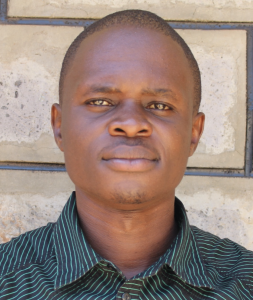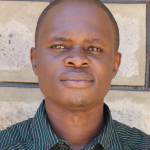"With no water point in school, I am forced to carry water to school in the morning and at lunchtime and this makes me feel tired. There are times when I abscond classes for fear of being punished for not carrying water to school. This is especially true when I don't get water at home," recounted Winnie, who is 1 of 412 students at Gimengwa Primary School.
An average day for Gimengwa Primary pupils begins at 7:00 am when they arrive at school carrying water from home. Bringing water into the school is intertwined with the normal class activities because students have to go back home during break time and lunchtime to get more water to sustain all of the school's drinking, cooking, and cleaning needs. To do this, classes are disrupted, cut short, or missed altogether.
When pupils get back to school, they are often too tired from the cumbersome walk to concentrate well in class. Students' academic performance on the national examinations over the last few years has been poor, and many teachers and students alike are dismayed when pupils from this school cannot continue their education afterward. But the students are not the only ones affected by the water crisis here.
"Water adversely affects the day to day running of an institution. A shortage of this commodity stalls the day's activity and this entirely affects the performance of our institution. Personally, I have once fallen victim to an infection related to water - cholera - and on different occasions, I have been forced to abscond some of my lessons [while sick]," explained Head Teacher Mr. Wilson Jarega.
Even though some of the water sources students choose at home may be safe, a quick spot check of the jerrycans pupils use to transport and store the water revealed that they were not clean on the inside and they did not have lids. With the school's 18 teachers and staff unable to monitor students' home water sources, the water is not trusted and prone to mishandling by the pupils along the way.
Because water is combined for use at school, even 1 contaminated source means everyone is at an elevated risk for waterborne diseases. Students report cases of typhoid, stomachaches, and diarrhea after consuming water at school. Water-related illnesses are made worse by the overcrowding and overuse of the school's few latrines, which do not have accompanying handwashing stations to help curb fecal-oral disease transmission. Absenteeism due to students' waterborne illnesses follows, further taking them out of class and negatively impacting their grades.
What We Can Do:
Rain Tank
A 75,000-liter rainwater catchment tank will help alleviate the water crisis at this school. The school will help collect the needed construction materials such as sand, bricks, rocks, and water for mixing cement. We will complement their materials by providing an expert team of artisans, tools, hardware, and the guttering system. Once finished, this tank will begin catching rainfall that will be used by the school’s students and staff for drinking, handwashing, cooking, cleaning, and much more.
We and the school strongly believe that all of these components will work together to improve standards at this school, which will help lead to better student academic performance and will help to unlock the potential for these students to live better, healthier lives.
Handwashing Stations
There is currently nowhere for students to wash their hands after using the latrines or before eating lunch, let alone the water to do so.
The student health club will oversee the 2 new handwashing stations we will provide, and make sure they are kept clean and in working condition. The club leaders will fill the handwashing stations with water daily and make sure they are always supplied with a cleaning agent such as soap or ash.
VIP Latrines
2 triple-door latrine blocks will be constructed with local materials that the school will help gather. 3 doors will serve the girls while the other 3 will serve the boys. All of these new latrines will have cement floors that are designed to be easy to use and to clean. And with a rain tank right on school property, there should be enough water to keep them clean.
Training on Health, Hygiene, COVID-19, and More
We will hold a 1-day intensive training session with students, teachers, and parents. This training will cover a wide range of topics including COVID-19 symptoms, transmission routes, and prevention; personal and environmental hygiene; and the operation and maintenance of the rain tank, latrines, and handwashing stations. There will be a special emphasis on handwashing.
Our team of facilitators will use a variety of methods to train, including participatory hygiene and sanitation transformation, and asset-based community development. We will initiate a student health club, which will prepare students to lead other pupils into healthy habits at school and at home. We will also lead lectures, group discussions, and provide illustrative handouts to teach health topics and ways to promote good hygiene practices within the school including handwashing and water treatment. We will then conduct a series of follow-up trainings before transitioning to our regularly scheduled support visits throughout the year.

 Rainwater Catchment
Rainwater Catchment
 Rehabilitation Project
Rehabilitation Project





































